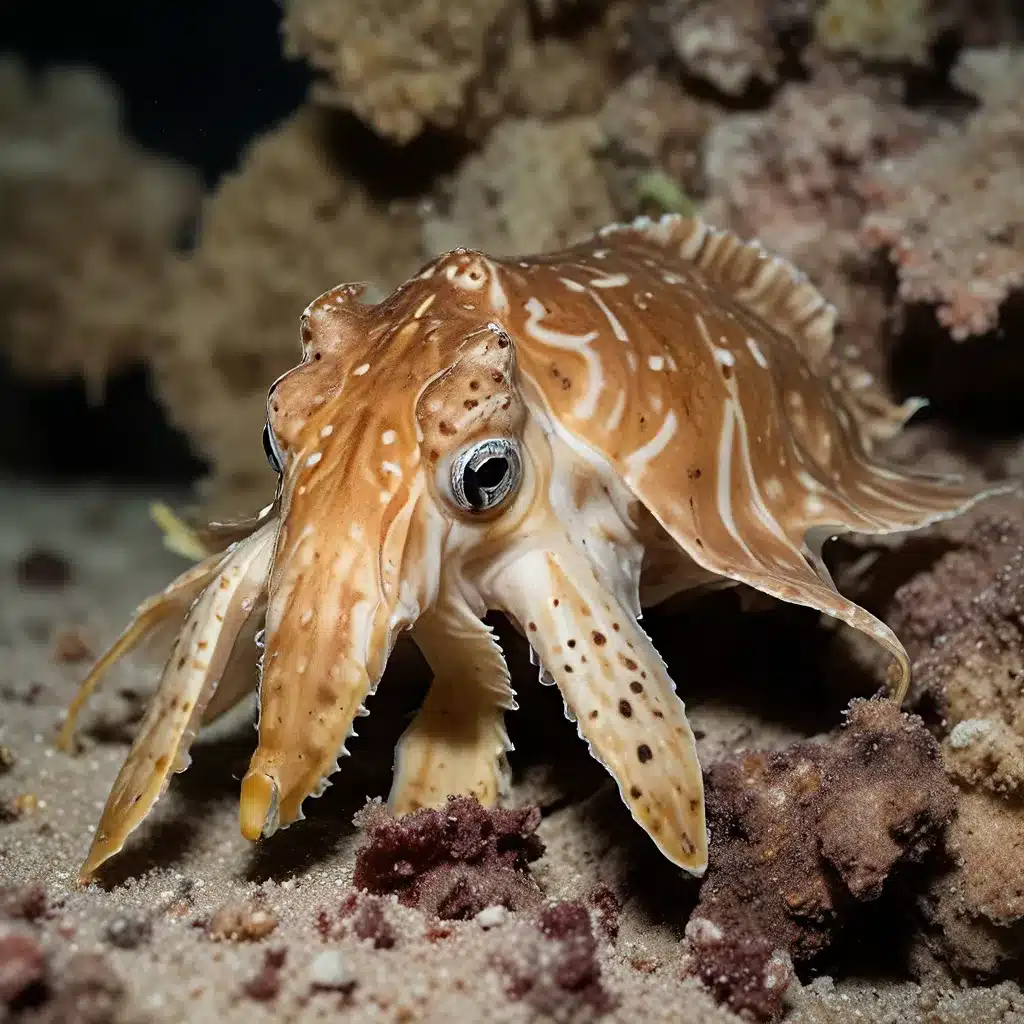
The Wonders of Cuttlefish Camouflage
The cuttlefish, a remarkable member of the mollusk family, is renowned for its unparalleled ability to camouflage itself in its environment. These fascinating creatures possess a unique set of adaptations that allow them to seamlessly blend in with their surroundings, making them a captivating subject for aquarium enthusiasts and marine biologists alike.
One of the most remarkable features of the cuttlefish is its ability to change color and texture instantaneously. Through a complex network of specialized skin cells called chromatophores, cuttlefish can rapidly adjust their appearance to match the colors and patterns of their immediate environment. This remarkable adaptation serves as a crucial defense mechanism, allowing the cuttlefish to evade predators and ambush unsuspecting prey with remarkable ease.
Studies have shown that cuttlefish can even mimic the appearance of seaweed, rocks, and other underwater structures, making them virtually invisible to the untrained eye. This chameleon-like ability is not only fascinating to observe but also serves as a testament to the evolutionary ingenuity of these remarkable creatures.
Cuttlefish Anatomy and Physiology
Cuttlefish belong to the class Cephalopoda, which also includes octopuses and squids. These mollusks possess a unique anatomy that sets them apart from their counterparts. One of the most distinctive features of the cuttlefish is its internal shell, known as the cuttlebone. This unique structure, which is composed of lightweight, gas-filled chambers, helps the cuttlefish maintain neutral buoyancy in the water column, allowing it to conserve energy and move with greater efficiency.
Another remarkable aspect of cuttlefish anatomy is their complex nervous system. Cuttlefish have a highly developed brain, which enables them to process visual information and make rapid decisions in response to changes in their environment. This advanced neurological capacity is a key factor in their impressive camouflage abilities, as they can quickly assess their surroundings and adjust their appearance accordingly.
Cuttlefish Behavior and Adaptations
In addition to their remarkable camouflage abilities, cuttlefish exhibit a range of fascinating behavioral adaptations that contribute to their success as predators and survivors in the marine ecosystem. One of the most notable behaviors is their ability to communicate through the use of color and texture changes.
Cuttlefish use these visual displays to convey a variety of messages, such as signaling their intentions to potential mates, warning off competitors, or even deterring predators. By subtly altering the patterns and hues of their skin, cuttlefish can effectively express their state of mind and interact with their environment in complex ways.
Another adaptation that makes cuttlefish well-suited for life in the aquarium is their ability to thrive in a variety of water conditions. These resilient mollusks can tolerate a wide range of temperatures, pH levels, and other water parameters, making them a popular choice for both beginner and experienced aquarium enthusiasts.
Cuttlefish in the Aquarium
When it comes to keeping cuttlefish in the home aquarium, attention to detail and proper habitat management are crucial. These fascinating creatures require specialized care and a well-designed environment to thrive.
One of the most important considerations for cuttlefish aquarium setup is water quality. Cuttlefish are sensitive to fluctuations in water parameters, and maintaining stable conditions is essential for their health and wellbeing. This may involve the use of advanced filtration systems, regular water changes, and close monitoring of water parameters such as pH, temperature, and dissolved oxygen levels.
Additionally, cuttlefish require ample hiding places and visual stimuli within their aquarium. Providing a variety of structures, such as rocks, caves, and artificial plants, can help these captivating creatures feel secure and comfortable, allowing them to exhibit their natural behaviors, including their remarkable camouflage displays.
Feeding and Enrichment for Cuttlefish
Proper feeding is another crucial aspect of cuttlefish care in the aquarium. These carnivorous mollusks require a varied diet that includes a mix of live and frozen prey, such as shrimp, small fish, and crab. Offering a diverse menu can help ensure that cuttlefish receive the necessary nutrients and stay engaged and stimulated in their environment.
In addition to a well-balanced diet, enrichment activities can also play a vital role in the overall health and wellbeing of cuttlefish in captivity. Providing opportunities for exploration, problem-solving, and natural behaviors, such as allowing them to hunt for their food or manipulate objects in their environment, can help prevent boredom and stress.
Conclusion
The cuttlefish is a truly remarkable creature, captivating both aquarium enthusiasts and marine biologists with its unparalleled ability to camouflage itself. Through a complex system of color-changing skin cells and a highly developed nervous system, these fascinating mollusks can seamlessly blend in with their surroundings, making them a sight to behold.
By understanding the unique adaptations and care requirements of cuttlefish, aquarium hobbyists can create vibrant and engaging displays that showcase the beauty and wonder of these captivating creatures. Whether you’re a seasoned aquarist or a newcomer to the hobby, the captivating cuttlefish is sure to leave a lasting impression and inspire a deeper appreciation for the incredible diversity of life in the marine world.

